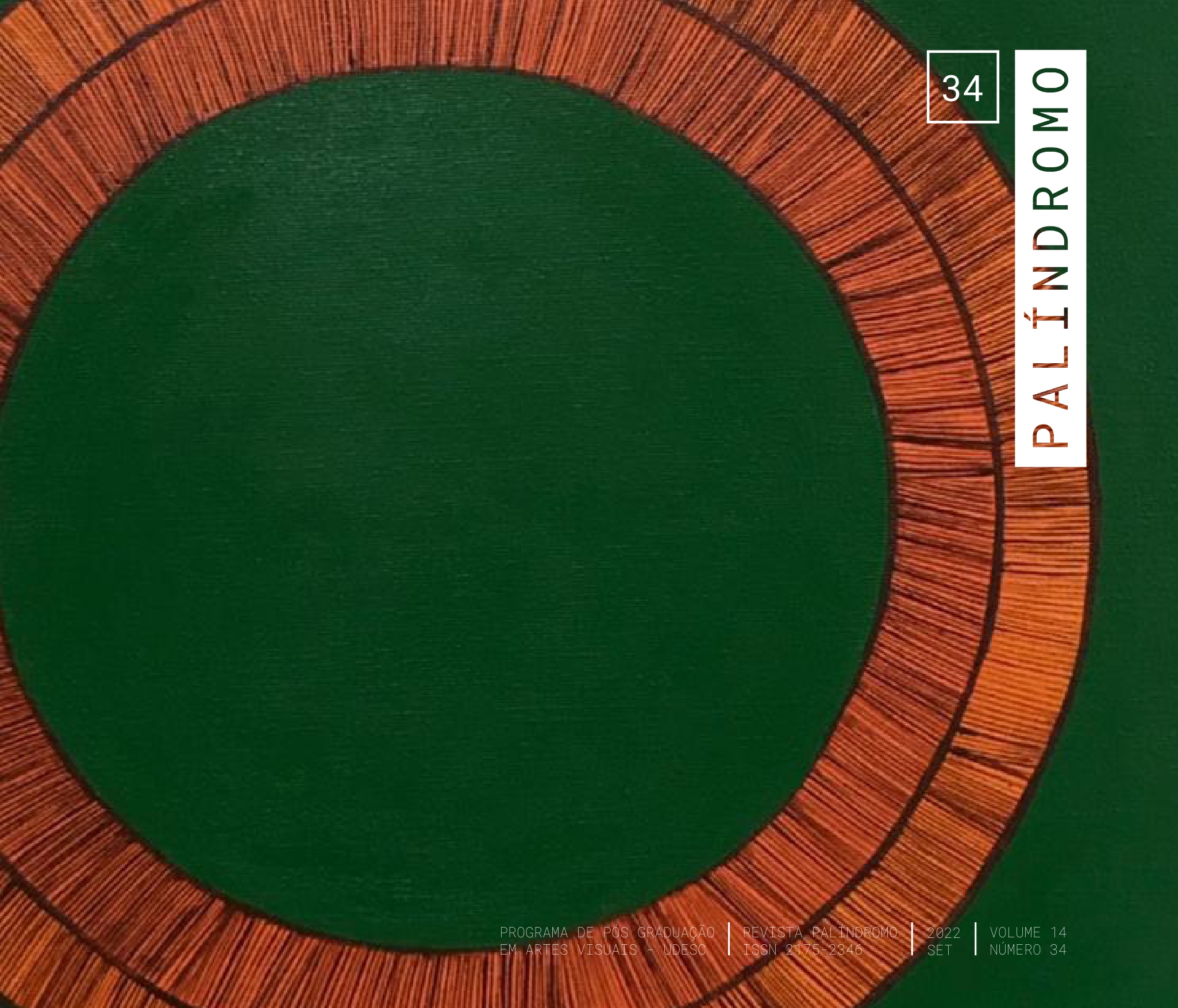Las prácticas artísticas rituales y la frución del axé en candomblé Ketu
DOI:
https://doi.org/10.5965/2175234614342022011Palabras clave:
Axé, Candomblé de Ketu, Rituales, Estética afro-brasileña, OrishasResumen
El objetivo de este artículo es caracterizar, a modo de introducción, ciertas prácticas artísticas rituales que se realizan en el Candomblé de la nación de Ketu, tales como los cantos a las deidades africanas, denominadas Orishas, las coreografías de las danzas, los toques de los instrumentos de percusión, llamados Atabaques, y las vestimentas, no intuito de comprenderlos a partir de los Ìtàn, que son los relatos mitológicos relacionados con las deidades. También se pretende verificar la relación de esas prácticas artísticas con la fruición del Axé, o sea, los toques de los atabaques, los cantos y las danzas, que fijan los cuerpos de los Ẹlẹ́gùn para la personificación de los Orixás, durante el Xirê, de manera tal que cuando se llega a la exactitud en la ejecución de los cantos, de las danzas, en la composición del vestuario, en las insignias de los Orishas y en la conducta de las/os hijas/os de santo durante el ritual, estamos presenciando la fruición del Axé. Este, a su vez, se refiere a la potencia inherente a la vida, que es capaz de transformar y realizar un proceso creativo, que garantiza el desarrollo de la existencia misma. Para apoyar este análisis, consideramos los diálogos establecidos, a través de entrevistas, con la Ìyálòrìsà Márcia Ty Ọ̀ṣun y con el Bàbálòrìsà Fábio ty Ọ̀ṣọ́ọ̀si, que son sacerdotes del Ilê Erô Opará Ofá Odé Asé Jaynã. También utilizamos la investigación bibliográfica, en particular, de los escritos de la Ìyálòrìsà Gisselle Cossard-Binon, José Beniste, Muniz Sodré, Pierre Verger, Vilém Flusser, entre otros. Vale la pena destacar que tales prácticas y conocimientos representan, en Brasil, los aspectos de la cultura y la historia del pueblo yoruba, originario de Benin, Togo y Nigeria, Sierra Leona, entre otros países.
Descargas
Citas
ABIMBOLA, Wande. A concepção iorubá da personalidade humana. Filosofia Africana, 1981. Disponível em: https://filosofia-africana.weebly.com/uploads/1/3/2/1/13213792/wande_abimbola_-_a_concep%C3%A7%C3%A3o_iorub%C3%A1_da_personalidade_humana.pdf. Acesso em: 18/06/2022.
BENISTE, J. Òrun Àiyé: o encontro de dois mundos. O sistema de relacionamento nagô-yorubá entre o céu e a terra. 5ª edição. Rio de Janeiro: Bertrand Brasil, 2006.
BENISTE, J. Dicionário yorubá-português. 2ª edição. Rio de Janeiro: Bertrand Brasil, 2014.
COSSARD-BINON, G. “A filha de santo”. In: Moura, C. E. M. (org.). Olóòrìsà. Escritos sobre a religião dos orixás. São Paulo: Ágora, 1981, p.127-151.
FLUSSER, Vilém. Fenomenologia do brasileiro. Rio de Janeiro: UERJ, 1998. Disponível em: https://filosoficabiblioteca.files.wordpress.com/2016/03/flusser-fenomenologia-do-brasileiro.pdf > Acesso em: 16/06/2022.
KILEUY, Odé; DE OXAGUIÃ, Vera. O candomblé bem explicado: Nações Bantu, Iorubá e Fon. Pallas Editora, 2015.
MUNANGA, K. Negritude. Usos e sentidos. 3ª edição. Belo Horizonte: Autêntica Editora, 2012.
PRANDI, R. Mitologia dos orixás. 27ª edição. São Paulo: Companhia das Letras, 2001.
SODRÉ, M. O terreiro e a cidade: a forma social negro-brasileira. Mauad Editora Ltda, 2019.
VERGER, Pierre. Orixás: deuses iorubás na África e no Novo Mundo. Salvador: Fundação Pierre Verger, 2018.
Descargas
Publicado
Cómo citar
Número
Sección
Licencia
Derechos de autor 2022 Alice de Carvalho Lino Lecci

Esta obra está bajo una licencia internacional Creative Commons Atribución 4.0.
DECLARAÇÃO DE DIREITOS AUTORAIS
a. Os artigos publicados pela revista são de uso gratuito, destinados a aplicações acadêmicas e não comerciais. Todos os direitos autorais são atribuídos à revista. Os artigos cujos autores são identificados representam a expressão do ponto de vista de seus autores e não a posição oficial da Revista Palíndromo. O (s) autor (es) compromete-se sempre que publicar material referente ao artigo publicado no Palíndromo mencionar esta publicação da seguinte forma:
Este artigo foi publicado originalmente pela revista Palíndromo em seu volume (coloque o volume), número (coloque o número) no ano de (coloque o ano) e pode ser acessado em: http://www.revistas.udesc.br/index.php/palindromo
b. Plágio, em todas as suas formas, constitui um comportamento antiético de publicação e é inaceitável. A revista Palíndromo utiliza o software iThenticate de controle de similaridade


